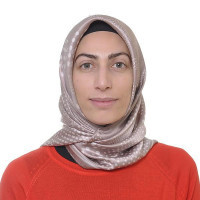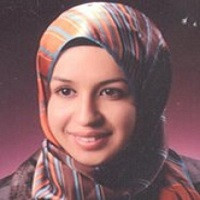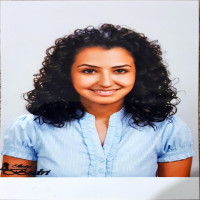GUIDE FOR AUTHORS
The manuscripts must be written in English. The manuscript should be submitted in Microsoft Word format with the following content;
I. Cover Letter to Editor: The category of the submitted article, the name of the person or organization that financially supports the work, if any, and the affiliation of these organizations with the authors, if any, before the publication of another journal.
II. Title Page: The title (Turkish and English) should be simple and straightforward. The names (First Letter Uppercase), surnames (All capital letters), institutions, and the city must be included on this page. Institution information should be indicated with a superscript number before the name of the author, and the knowledge of the institution, city, and country should be written below in front of this superscript number. The corresponding author's name, complete address, institution / mobile phone number, and e-mail address should be included on this page. All authors'
ORCID IDs must be added to the title page with the HTTPS extension. Example: Suleyman Kaleli: https: //orcid.org/0000-0002-6043-2521
A maximum of 3 authors should be included in review articles and case reports. For a letter to the editor, there should be a maximum of 1 author.
III. Main TextAbstract: The length of the abstract in Turkish or English should be a maximum of 200 words for research articles and a maximum of 150 words for other essays. Abstract for the research article should include the Objective, Materials and Methods, Results, and Conclusion. Abstract for review and case report articles should be written in one paragraph, without headings. Keywords consisting of at least 3 (three) and at most 5 (five) should be written with a space between the digits. Keywords should be compatible with
Index Medicus,
Medical Subject Headings, and
Turkish Scientific Terms Dictionary. Keywords should be registered in alphabetical order. The main text should include the title of the manuscript in Turkish and English, as well as Turkish and English abstracts.
The Turkish abstract and title of the article submitted from outside Türkiye can be translated free of charge by the journal's Editorial Team.
Primary Text: Technical terms, symbols, and abbreviations should be defined in the first use of the article. All chapters should be written in the format suggested below. The introduction should be no more than 400 words. The research article should not exceed 2500 words, the review article should not exceed 3000, and the case report should not exceed 1500 words. In research that requires ethical committee approval; In the first paragraph of the Materials and Methods section; the institution, name of the ethics committee (date, decision number), and the statement that the study was carried out following the international declaration, guidelines, etc. In addition, in the case of reports, on one of the first/last pages of the article, information that the informed consent form was signed should be included. In the Discussion and Conclusion section, care should be taken to write it comparatively with references from the last 5-6 years.
Research article format; (
Information on the main text page)
Title of the Article (in Turkish and English for the article uploaded from Türkiye)
ABSTRACT and Keywords (in Turkish and English for the paper uploaded from Türkiye)
INTRODUCTION
MATERIALS AND METHODS
RESULTS
DISCUSSION AND CONCLUSION (It should be written with current references covering the last 5-6 years (minimum 80%)).
REFERENCES
Tables and figures (Where they should be in the Results Section)
Case presentation format; (Information on the main text page)
Title of the Article (in Turkish and English for the article uploaded from Türkiye)
ABSTRACT and Keywords (in Turkish and English for the paper uploaded from Türkiye)
INTRODUCTION (too short)
CASE REPORT
DISCUSSION AND CONCLUSION
REFERENCES
Tables and figures (Where they should be in the Results Section)
Review article: Invited review articles will be accepted (For the paper uploaded from Türkiye, the article title, abstract, and keywords should be written in Turkish and English).
Note: For the case report, review, and research articles, it is obligatory to write the Author Contributions (for more than one author), Conflict of Interest, Ethics Committee Approval (If there is; Date and decision number, if not; not available or informed consent and information about signing the consent form for case report) and if any, the Financial Support and Acknowledgment in the main text.
Examples for additional information (Before References):Ethics Committee Approval: Our study was approved by the XXX University Ethics Committee (Date: 25.12.2021, decision no: 12). The study was carried out following the international declaration, guidelines, etc. (For case report: The patient/relatives have signed an informed consent/consent form, and the study was conducted following the international declaration, guidelines, etc. For Review: Editor invited to review. Ethics committee approval is not required).
Conflict of Interest: No conflict of interest was declared by the authors.
Author Contributions: Concept – FV, SG; Supervision – FV, AB, SG; Materials – OE, GK; Data Collection and/or Processing – FV, AB; Analysis and/or Interpretation – BZP, FV, SG; Writing –FV, SG.
Peer-review: Externally peer-reviewed.
Financial Support: If there is.
Acknowledgment: If there is.
Other Information: If there is; a Congress presentation, production status from Master's / Doctorate / Specialization Thesis, etc.
Page Structure and Format: All manuscripts submitted to the journal for publication should be prepared in MS Word files in the following format (MSWord template).
• The entire text should be written in justified Times New Roman format with 12 type sizes and one and a half lines spacing.
• The article's length, including all sources, tables, and figures, should be at least 4 (four) and at most 15 pages.
• The total number of tables, figures, graphics, and photographs should not exceed 5 (maximum 5). Lines and columns of tables should be drawn.
• All figures, graphics, photographs, and tables should be referred to in the main text, and tables and figures should be placed at the appropriate place in the text, not at the end of the text. Graphs, figures, and tables in the text should be numbered. Shapes, graphics, and photos should be in JPG or TIFF format. If human photographs are to be used, these persons should not be recognized in the picture, or written permission must be obtained. If a pre-published form is used, permission must be obtained from the individual who has the right to publish.
IV. Ethics Committee Approval: The permission from Ethics Committee/ Institutional Review Board is mandatory for all studies on human subjects. "Documents and information requested for studies requiring ethics committee permission" should be uploaded to the system. An ethics committee approval certificate should be uploaded to the system for scientific studies except for case reports/series and review articles. In the case of reports, an informative volunteer/consent form should be included in the article. In research that requires ethical committee approval; In the first paragraph of the Materials and Methods section; the institution, name of the ethics committee (date, decision number), and the statement that the study was carried out following the international declaration, guidelines, etc. In addition, in the case of reports, on one of the first/last pages of the article, information that the informed consent form was signed should be included. In which cases is ethical approval required?
Click! When presenting findings, statistical tests and p-values should be included as well as measures defining effect size (such as relative risk and odds ratio). Statistical terms, abbreviations, and symbols should be defined. The computer program used must be specified.
V. References: The number of references should be a maximum of 10 for the case report, 30 for the research articles, and no limit for the review articles. The following short descriptions contain information frequently referred to by the American Medical Association (AMA) resource format. Click for the style file. The references should be numbered according to the first pas sequence in the text, and the reference numbers should be listed in the references section in automatic numerical order. The references in the text should be added, as shown in the following examples at the end of the citation, as a superscript with the Arabic number. Diabetes mellitus is associated with a high risk of foot ulcers
.1-3Several interventions have been held to increase compliance.
11,14-16The data of Smith et al.
18 is further evidence of this effect.
As reported previously,
1,3-6Examples for References: Author names should be written in reverse order and only initials of the first and middle names without spaces. Only the first word should be capitalized except in unique abbreviations in the article headings in the Welder. Abbreviations in
Index Medicus should be used in journal titles. Page ranges should be written in full.
1. Journal articles (1-6 authors):
Islam MA, Alam F, Solayman M, Khalil MI, Kamal MA, Gan SH. Dietary phytochemicals: Natural swords combating inflammation and oxidation-mediated degenerative diseases. Oxid Med Cell Longev. 2016;2016:5137431. doi:10.1155/2016/5137431
2. Journal articles (more than six articles):
Geller AC, Venna S, Prout M, et al. Should the skin cancer examination be taught in medical school? Arch Dermatol. 2002;138(9):1201-1203.
3- Journal articles with DOI numbers:
If there is a page number: Fontanarosa P, Bauchner H. Conflict of interest and medical journals. JAMA. 2017;317(17):1768-1771. doi:10.1001/jama.2017.4563
Suppose the article ID number/article number is available: Ammar A, Brach M, Trabelsi K, et al. Effects of COVID-19 home confinement on eating behavior and physical activity: Results of the ECLB-COVID19 international online survey. Nutrients. 2020;12(6):1583. doi:10.3390/nu12061583
If the page number is unavailable: As AK, Engin M, Türk T. Early-term results of early coronary artery bypass graft surgery in patients undergoing primary percutaneous coronary intervention due to acute coronary syndrome. Eur Res J. 2020. doi:10.18621/eurj.593369
4. Journal articles that do not have an author or group name:
Centers for Disease Control and Prevention (CDC). Licensure of a meningococcal conjugate vaccine (Menveo) and guidance for use-Advisory Committee on Immunization Practices (ACIP), 2010. MMWR Morb Mortal Wkly Rep. 2010;59(9):273.
5. Book:
McKenzie BC. Medicine and the Internet: Introducing Online Resources and Terminology. 2nd ed. New York, NY: Oxford University Press; 1997.
6. Book section:
Guyton JL, Crockarell JR. Fractures of acetabulum and pelvis. In: Canale ST, ed. Campbell's Operative Orthopedics. 10th ed. Philadelphia, PA: Mosby, Inc; 2003:2939-2984.
7. Electronic book:
Rudolph CD, Rudolph AM. Rudolph's Pediatrics. 21st ed. New York, NY: McGraw-Hill Companies; 2002. http://online.statref.com/Document/Document.aspx?DocID=1&StartDoc=1&EndDoc=1882&FxID=13&offset=7&SessionId=A3F279FQVVFXFSXQ. Accessed August 22, 2007.
8. Internet Document:
American Cancer Society. Cancer facts & figures 2003. http://www.cancer.org/downloads/STT/CAFF2003PWSecured.pdf. Accessed March 3, 2003.
9. Theses:
Yürümez Y. Organoprotective effects of interleukine-10 experimental organophosphate poisoning in rats. Erciyes University, Faculty of Medicine, Department of First and Emergency, Master, Doctorate or Expertise/Specialist Thesis. Kayseri, Türkiye. 2003.
10. Scientific Congress Presentations:
Muslu A. Sustainable methods to increase the business motivation of generation Y. III. International Entrepreneurship, Employment, and Career Congress. October 12-15, 2017, Istanbul / Türkiye.
Technical information for images: Image representations include files containing color or gray transitions or tones, such as a microscope, electron microscope, radiographic images, ECG, and EEG transcripts. There should be appropriate arrows and labels and signs on the picture to explain the situation, while there should be no explanation.
Image resolution: Minimum 300 dpi/ppi resolution for 10 cm color, black and white, or grayscale images. Image JPEG formats are accepted.
CHECKLIST
As part of the submission process, authors are asked to check compliance with all of the following clauses, and if they do not comply with these rules, submission files can be returned to the authors.
1. Title page
2. Cover Letter
3. Full-Text File
5. Ethics committee approval document (In pdf format).
Copyright Notice: Authors who publish their work in this journal have accepted the following terms:
a. The author retains the work's copyright and presents the first publication right. The result is licensed under the
Creative Commons Attribution license, which allows the author to be identified and shared by others, provided that the initial release is made in this journal.
b. The author may make separate contractual arrangements to distribute the published version of the work without full authorization (for example, sending it tpostingtutional database or posting it in a book).
c. Promote the sharing of authors' works on the internet (e.g., in an institutional database or on their websites) before submitting the journal or during the shipment process; this can lead to both fruitful exchange of ideas and early and more referral to the work (see
The Impact of Open Access).
Scientific and Ethical Responsibility: Scientific and Ethical Responsibility: The scientific responsibility of the articles belongs to the authors. All authors should actively participate in the study. For the manuscripts to be published in the journal, they should not have been published in another scientific journal or sent to another journal. If the submitted article has been presented before in any meeting, the name of the meeting, the date, and the city in which it is organized. The ethics committee must approve the research protocol on human and experimental animals of the institution concerned. Ethics permission information should be written in the Material and Method section. Please see Committee on Publication Ethics, ICMJE. Evaluation Process: The articles submitted to the journal are evaluated in three stages. In the first stage, articles are assessed in terms of the journal publication standards, and the papers that do not comply with the writing rules of the journal are rejected. After the article is edited according to the writing rules of the journal, it can be uploaded to the journal with the same name again. In the second stage, the editorial board evaluates the article in terms of content and method. The papers completing the first two stages are sent to the journal referees for peer review. If needed, some questions can be asked to the authors to answer; or some defaults may have to be corrected by the authors. The result can be acceptance, minor revision, major revision, rejection in the current form, or rejection. Accepted manuscripts are forwarded for publication; in this stage, all information and data are checked and appropriately controlled; the proof of the article to be published by the journal is forwarded to the writers for proofreading and corrections. Ten days after minor revision, 20 days after major revision, and 30 days after needed to rewrite edit required. The editor rejects the article if the author does not participate in the process on time, the editor rejects the article.
Privacy Statement: This journal site's names and e-mail addresses will only be used for the purposes specified in this journal. But, it shall not be used for any other purpose or for the use of other persons (See
COPE).

 0000-0003-1514-1685
0000-0003-1514-1685



 0000-0001-8067-3165
0000-0001-8067-3165

 0000-0002-2599-1918
0000-0002-2599-1918











